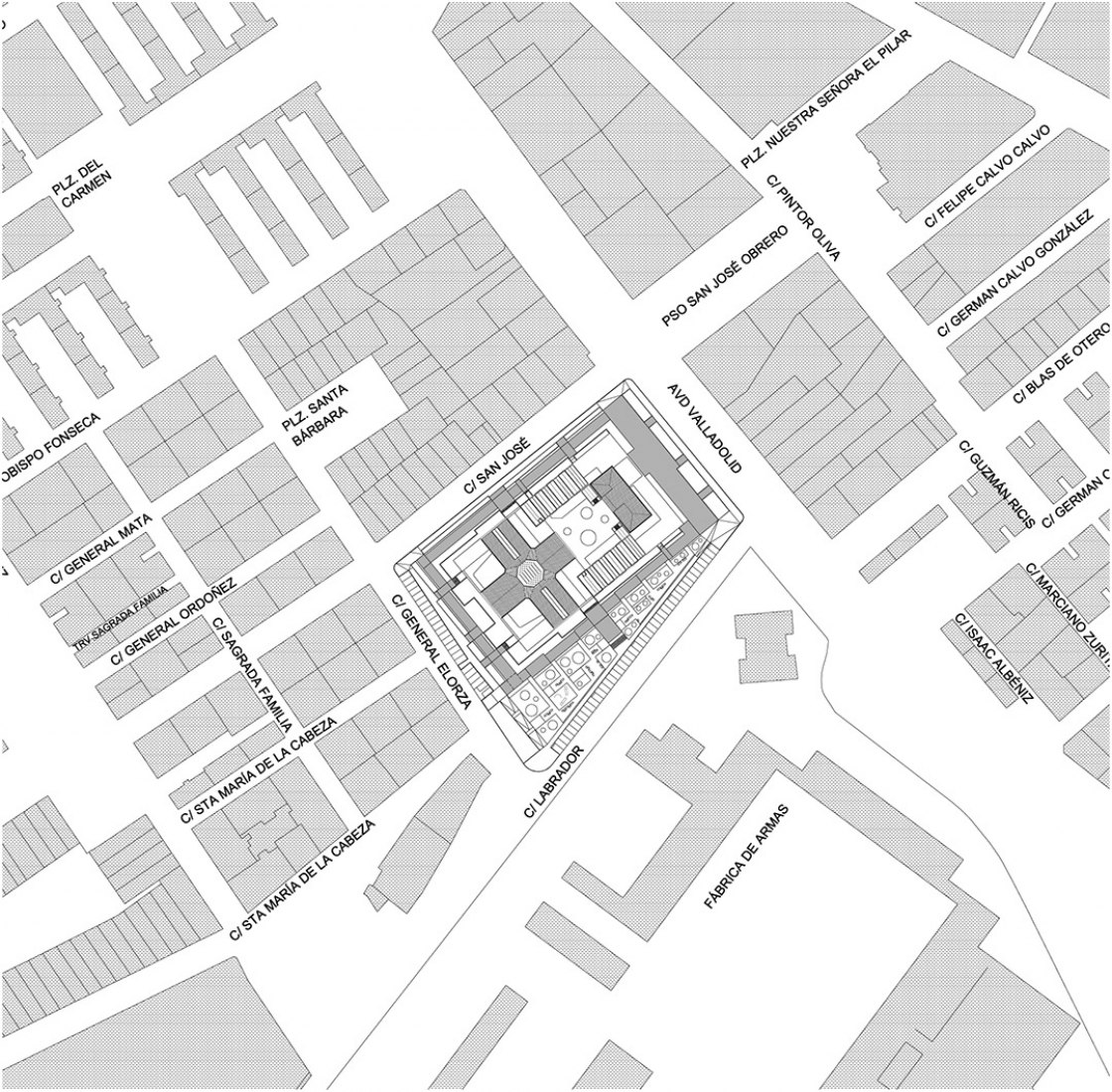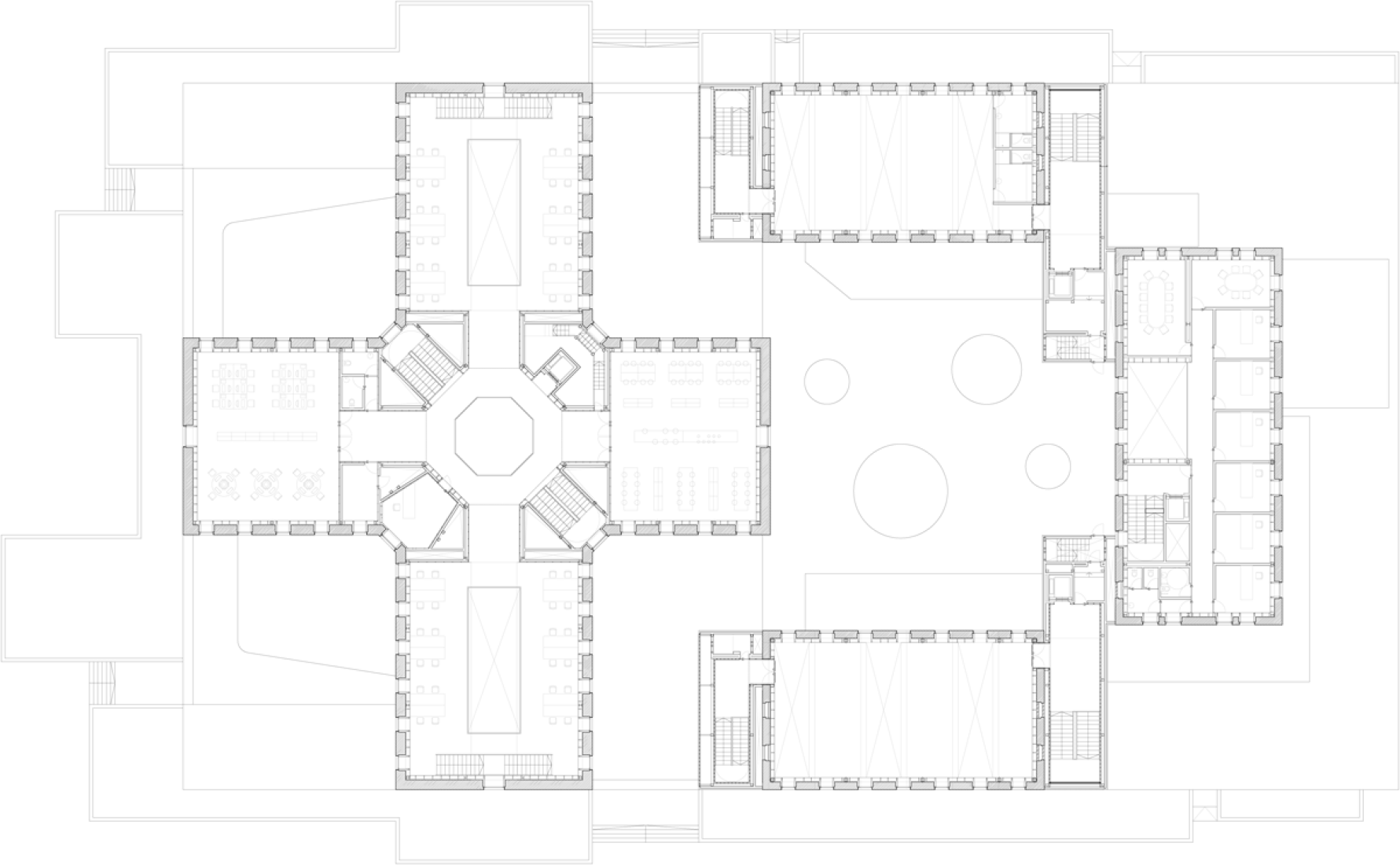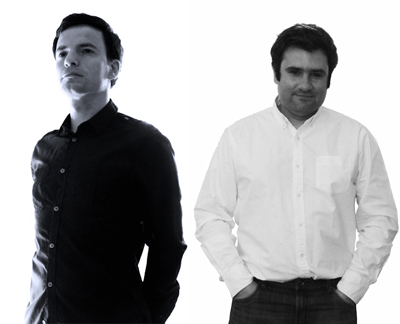The former Palencia Provincial Prison complex was created at the end of the XIX century, built with brick bearing walls following the “neomudéjar” style, and composed mainly of four two-storey wings and some other with one storey. On this building was planned a comprehensive refurbishment to transform the former use and convert it into a center that promotes the social and cultural activity in this part of the town.
Our proposal intends to convert the former prison into a meeting place, recovering some of the old spaces, and creating at the same time new structures that make possible the new planned activities. It is a project that respects the existing building, which is given a contemporary, lighter appearance, and where the natural light will play a key role.
With this aim the main two-storey wings have been refurbished, emptying their interior and placing a new independent structure to bear the new floors and roofs. Besides, between the main wings have been built new connecting pavilions, which form the new complex perimeter and give it a modern and friendly aspect.
The whole building is structured around a large hall that connects the 4 halls of the old prison. It is an open space supported only in a slight cylindrical glass courtyards and backbone illuminate the room. For its central location in relation to flags, this space acts as a hub and distributor of users, across the entrance pavilion and reception, are directed towards the other rooms of the Centre.
The lobby gives way to the side pavilions where are the auditorium and several classrooms for music and visual arts. Upstairs, under a large glass skylights, two multipurpose rooms are devoted to larger groups.
For the area dedicated to the library reserve spaces that formerly housed the cells of prisoners. The reading rooms are organized around a central high-rise under an octagonal lantern that acts as a distributor of the different rooms and rushing the vertical cores of communication and control areas and offices.
Finally, access to the Centre carries out through a glass perimeter very light and bright intended as a filter between the city and the activity inside. A structural steel beam travels abroad tying glazed areas with old masonry walls getting an alleged industrial air.
This also contributes the use of metallic materials throughout the intervention, as the zinc facades and roofs, glass and bodies uglass in low and skylights, louvres and aluminum as light filters.
(Italic txt: Exit Architects)
CREDITS
Architects: Ángel Sevillano / José Mª Tabuyo / Eduardo Delgado Orusco.
Client: Ministerio de Fomento / Ayto. de Palencia.
Collaborators: Mario SanJuán, Ibán Carpintero, Miguel Gracía-Redondo, Silvia N. Gómez. Consultant structures: NB35. José Luis Lucero. Consultant facilities. Grupo JG. Juan Antonio Posadas. Consultant Lighting: Manuel Díaz Carretero. Quantity surveyor: Alberto Palencia / José Antonio Alonso.
Contractor: COPISA - CONSTRUCTORA PRIENAICA S.A.
Area: 5.077 m²
Budget:: 9.675.038 euros.
Design project: 2007.
Construction proyect: 2011.














































